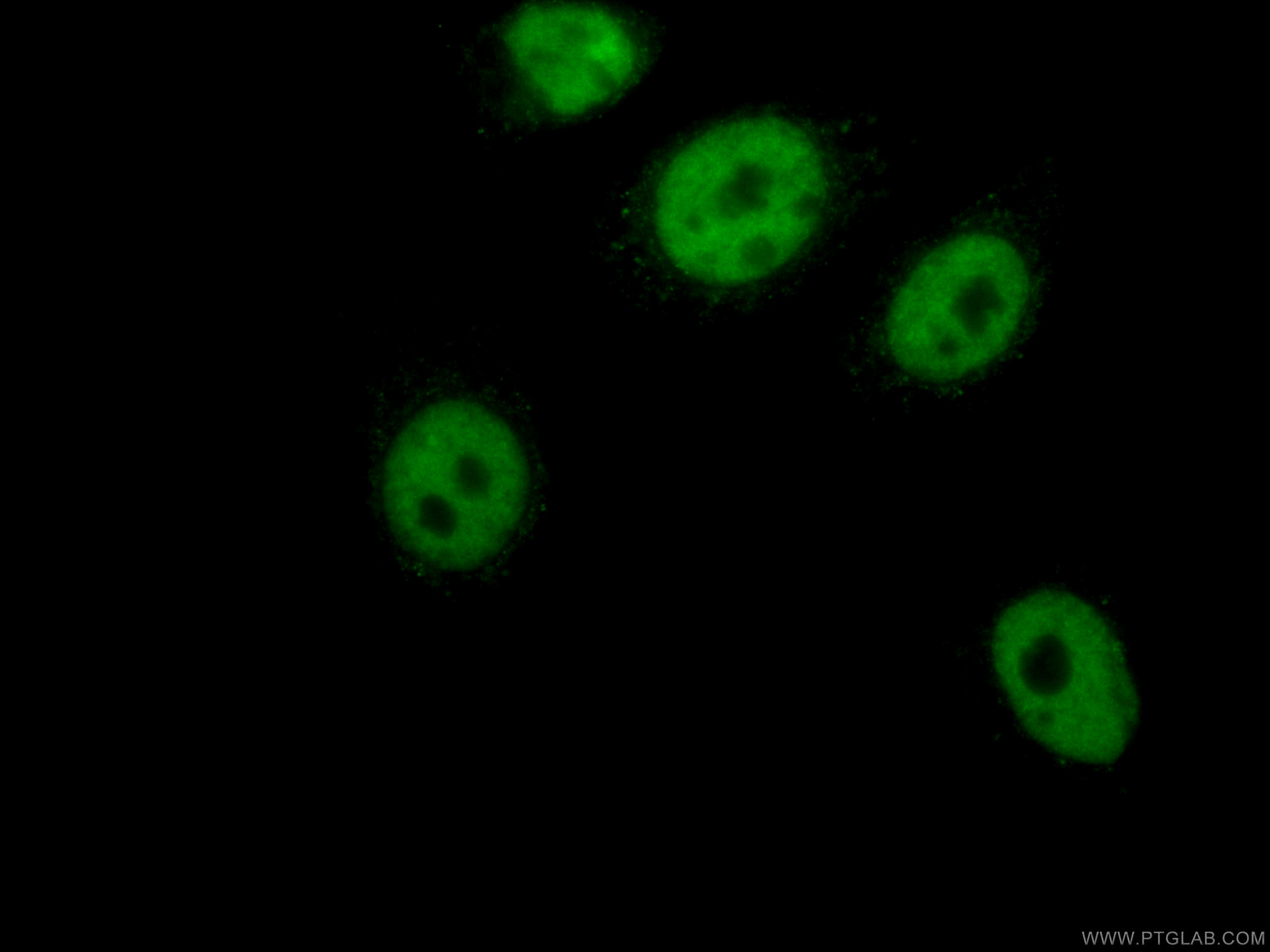验证数据展示
经过测试的应用
| Positive IF/ICC detected in | HepG2 cells |
推荐稀释比
| 应用 | 推荐稀释比 |
|---|---|
| Immunofluorescence (IF)/ICC | IF/ICC : 1:50-1:500 |
| It is recommended that this reagent should be titrated in each testing system to obtain optimal results. | |
| Sample-dependent, Check data in validation data gallery. | |
产品信息
CL488-66349 targets MKP-2 in IF applications and shows reactivity with human, pig, rat, mouse samples.
| 经测试应用 | IF Application Description |
| 经测试反应性 | human, pig, rat, mouse |
| 免疫原 | MKP-2 fusion protein Ag1206 种属同源性预测 |
| 宿主/亚型 | Mouse / IgG1 |
| 抗体类别 | Monoclonal |
| 产品类型 | Antibody |
| 全称 | dual specificity phosphatase 4 |
| 别名 | dual specificity phosphatase 4, DUSP4, HVH2, MAP kinase phosphatase 2, MKP 2, MKP2, MKP-2, TYP, VH2 |
| 计算分子量 | 43 kDa |
| 观测分子量 | 43 kDa, 33 kDa |
| GenBank蛋白编号 | BC014565 |
| 基因名称 | DUSP4 |
| Gene ID (NCBI) | 1846 |
| RRID | AB_2883315 |
| 偶联类型 | CoraLite® Plus 488 Fluorescent Dye |
| 最大激发/发射波长 | 493 nm / 522 nm |
| 形式 | Liquid |
| 纯化方式 | Protein G purification |
| UNIPROT ID | Q13115 |
| 储存缓冲液 | PBS with 50% Glycerol, 0.05% Proclin300, 0.5% BSA, pH 7.3. |
| 储存条件 | Store at -20°C. Avoid exposure to light. Stable for one year after shipment. Aliquoting is unnecessary for -20oC storage. |
背景介绍
DUSP4, also named as MKP-2, is a member of the mitogen-activated protein (MAP) kinase phosphatase family which has been suggested to play an important role in the feedback control of MAP kinase-mediated gene expression. DUSP4 preferentially inactivates ERK1, ERK2 and JNK, is expressed in a variety of tissues, and is localized in the nucleus. DUSP4 encodes two distinct isoforms: MKP-2-L(43 kDa) and MKP-2-S (33 kDa).
实验方案
| Product Specific Protocols | |
|---|---|
| IF protocol for CL Plus 488 MKP-2 antibody CL488-66349 | Download protocol |
| Standard Protocols | |
|---|---|
| Click here to view our Standard Protocols |
